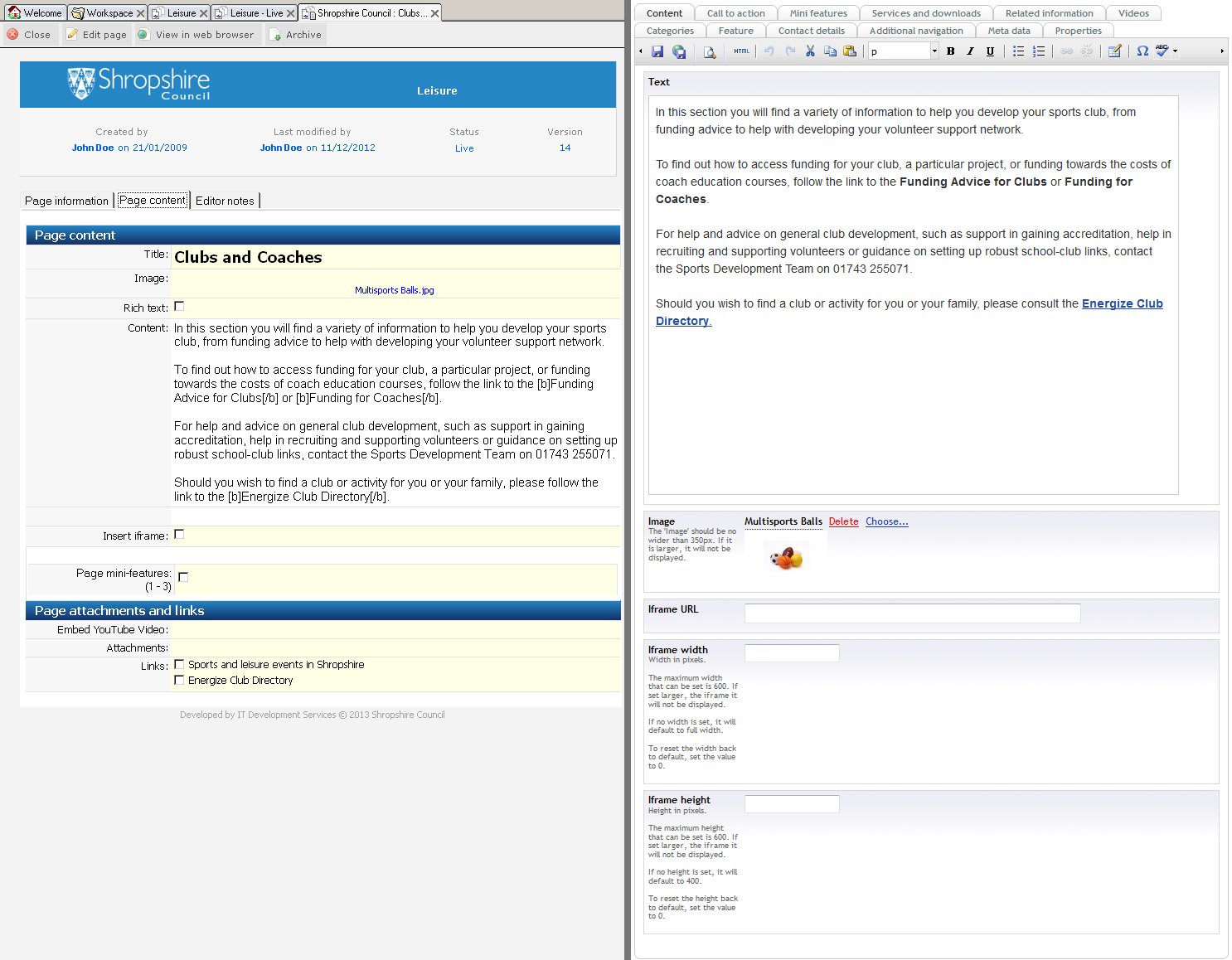Yes, shropshire.gov.uk has moved - well, the content has at least.
For the last 4 years the main Shropshire Council website was running on a legacy bespoke Content Management System (CMS), built on the Lotus Domino platform. This was forked from the previous pre-unitary Shropshire County Council CMS - making some parts of the code nearly 12 years old in total!
Recently we gave shropshire.gov.uk the keys to its new home on the Umbraco CMS which we have written quite a bit about over the past year.
The old vs the new
In all fairness Lotus Domino has done its job over these years. It has been reliable and it has been quick (at least for our customers), but it did come with some drawbacks.
Most noticeably was development - it was always quite slow and quite limiting owing to the legacy spaghetti code we had to pick through. To put it into perspective, the Domino website & CMS used to run on a six to eight week cycle for the release of change requests and bug fixes, with one or two developers working on them over that period. With Umbraco, we were able to start with a clean slate, and a single developer was able to rebuild the design, templates and functionality of almost the entire site in approximately six weeks.

Lotus Domino required a cumbersome database to be set up for each service-area (left) where Umbraco uses 'click-and-create' content nodes (right)
The Domino platform itself also came with its own quirks and bugs, like user-unfriendly URLs and not-so-intuitive naming conventions. We also encountered problems with handling large or multiple attachments on pages, which started to become a severe issue for our editors. Again, Umbraco has allowed us to address these limitations with user-friendly URLs and a dedicated media section (something Domino never had) for handling all page attachments and documents.
Another drawback was the need for the Lotus Notes client. A couple of years ago the Council moved its email service to Microsoft Exchange & rolled out Outlook, but the Lotus Notes client had to remain installed on computers in order for staff to update content on our website. Once more Umbraco provides a better solution - it uses a web-based interface, so potentially any PC on the Council network with an internet browser can be used to update content.

A comparison of the client based Lotus Notes editor (left) and web based Umbraco editor (right).
And it doesn't just stop there...
Before the migration project started we were already aware that Umbraco was moving towards the direction of supporting MVC while continuing to also support traditional ASP.NET WebForms. We like new things, and we like building efficient, clean & functional websites, so using MVC in Umbraco piqued our interest.
When we noticed Umbraco was now at the stage where you could switch the default rendering engine entirely from WebForms to MVC, we decided to take the leap & build the templates for the migration project using just MVC Views instead of WebForm master pages with embedded Razor scripts.
The MVC framework will be at the foundation of the Umbraco's future incarnations, so spending time exploring it on what is a relatively simple project - compared to new.shropshire.gov.uk in terms of functionality and templates - seemed a no-brainer to us.
We were already familiar with building Razor based macro scripts from developing new.shropshire.gov.uk, so we found using MVC pretty intuitive. In fact, since this project we've pretty much started thinking about how else we can use this framework, and how we can convert some of our other Umbraco-based websites too!